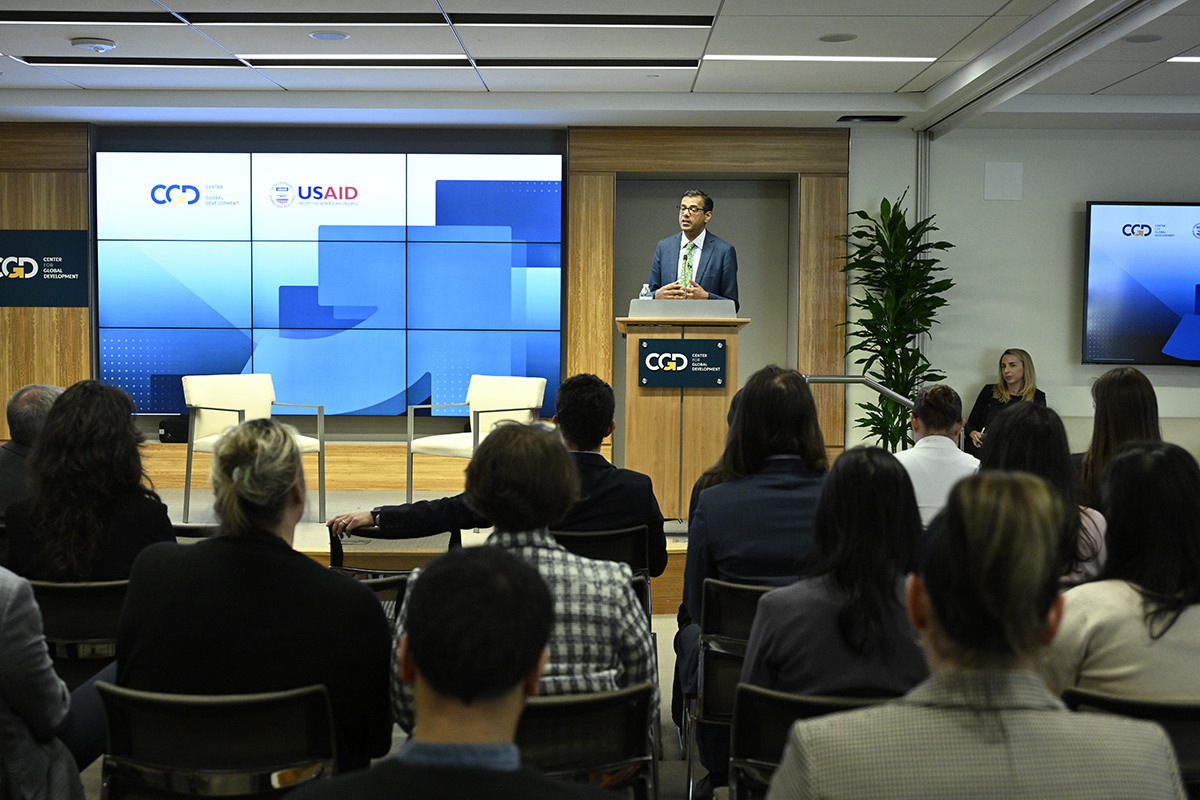Recommended

Event
Journey to Self-Reliance: From Theory to PracticeIt’s been over a year since the US Agency for International Development (USAID)—under the new brand of the “Journey to Self-Reliance”—set out to reorient its work to better support partner countries in tackling their development challenges. One of the first major products of the new framework was the initial set of Country Roadmaps, released in October 2018. At that point, the Journey to Self-Reliance was still largely theoretical. But since then, USAID has been working to translate that theory into practice.
Over the course of the last year, the agency began revamping country strategies, launched a new policy framework, identified actions to make procurement and program design more effective, and established a private sector engagement strategy, among other efforts. To get a better understanding of how the new Journey to Self-Reliance pivot is being implemented both in Washington and in the field, CGD hosted a public event featuring USAID Assistant to the Administrator Chris Maloney, Deputy Assistant Administrator of USAID’s Europe and Eurasia Bureau Gretchen Birkle, Mission Director for USAID/Ethiopia Sean Jones, and President and CEO of Plan International USA Tessie San Martin.
If you missed it, you can watch the full event online. Below are four key takeaways.
The Journey to Self-Reliance is about much more than metrics, it’s an entry point into systems-based thinking.
As noted above, one of the more visible aspects of the Journey to Self-Reliance so far is the Country Roadmaps, which seek to plot, using 17 publicly available third-party metrics, both a country’s commitment to sustainable, broad-based development and its capacity to implement its development agenda. These snapshots provide a basis for framing USAID’s partnerships with the country and help orient dialogue around the goal of self-reliance.
As my colleague Sarah Rose has pointed out, the roadmaps don’t tell the whole story, in that no set of indicators can comprehensively and precisely measure development progress across the wide array of country contexts that exist worldwide. But, as Maloney described, the Journey to Self-Reliance is a system and the roadmaps and metrics are just one piece. He underscored that the roadmaps are meant to be an analytical entry point and conceptual anchor from which USAID missions can identify how they can best support countries’ ability to plan, finance and implement their own development solutions. Jones then pointed out that the Ethiopia mission avoided focusing on any single one of the indicators, instead using the roadmaps to spur a productive discussion with the new reformist government on how business could be done differently within country systems and how USAID could support historic policy changes.
Birkle explained that the messaging of “self-reliance” needs to be calibrated based on context. Terms such as “responsibility” and “transparency” are more likely to resonate with the more advanced economies in her portfolio. She also noted that conversations about ceding greater leadership and responsibility to partners should start early to account for the complicated work needed to redefine a country partnership.
The focus on building local capacity is welcome, but the type of capacity matters.
One of the core objectives of the Journey to Self-Reliance is to support partner countries’ capacity to implement their own development agendas. How—and with whom—USAID designs and procures programs is central to meeting this objective. The principles outlined in the 2018 Acquisitions and Assistance Strategy highlight the ways in which the agency seeks to diversify its partner base and work with local entities.
Dr. San Martin pointed out that while this is an important goal, USAID should be wary of focusing too narrowly on building local capacity to undertake USAID’s priorities, rather than fostering the ability of local actors to establish their own development agenda and work toward its achievement. Diverse implementers are necessary for the diverse contexts where USAID works. But if we accept that local actors should be chiefly responsible for their own development trajectory, then the agency’s investments should build country capacity in support of local development goals. She noted that USAID’s new approach to procurement may mean a more consultative and deliberative process. One which might allow partners to interrogate the end goal and the process by which countries can create local capacity—which is an important step in the right direction. Jones highlighted that through the Journey to Self-Reliance, missions are encouraged to consider prospects for burden-sharing and shared interests at the beginning of their engagement with countries, rather than five or 10 years on.
Conversations about strategic transition require high-quality, trusting relationships.
While the Journey to Self-Reliance is fundamentally about ending the need for aid to exist, USAID acknowledges that, for many countries, that day is far in the future. But there are a handful of countries for which a strategic transition in the donor relationship is likely in the more near term. North Macedonia and Georgia, for instance, are developing transition-focused country strategies. USAID has also been considering for some time how the agency’s relationship with Albania might evolve in light of the country’s development progress.
Birkle highlighted that in all of these conversations, “transition” is not meant to imply graduation, or a sudden exit. Rather, it is meant to imply maintaining high-quality, trusting relationships with partners on the ground that leverage the country’s advanced ability to lead its own development journey. And those relationships look fundamentally different from country to country. Conversations with Albania will focus on different sectors and challenges than with North Macedonia. Because these countries are high performers in the capacity dimension, USAID can be more proactive in the agency’s consultations with countries. Birkle emphasized that transition-focused strategies are about designing unique partnerships and programs that draw upon the ability of partner country governments to increase their own contributions to the development objectives USAID had been supporting. For example, USAID engaged in recent conversations with North Macedonia’s Ministry of Finance about the country’s ability to commit resources toward development challenges. Taking this tactic will enable USAID to focus investment on critical challenges that the United States is particularly well-positioned to support.
The Journey to Self-Reliance is less about new ideas than it is a new commitment to better practice.
As Dr. San Martin noted during the panel discussion, key aspects of the Journey to Self-Reliance are not entirely new. Co-creation, partner diversification, and other ideas have been topics of conversation in the development community for years. Data-driven prioritization for systems reform is also not a novel model. But, while not based on a new premise, USAID’s Journey to Self-Reliance is being implemented with a new coherence, energy, and commitment from leadership. We look forward to continuing to follow the journey.
Disclaimer
CGD blog posts reflect the views of the authors, drawing on prior research and experience in their areas of expertise. CGD is a nonpartisan, independent organization and does not take institutional positions.





